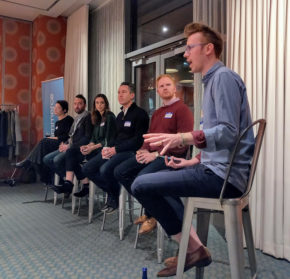
A practical framework for evolving from “more partners” to better ones without losing momentum.
As affiliate programs mature, growth alone is no longer the primary goal; instead, efficiency, alignment, and long-term value are what distinguish top-performing programs from the rest. At StackCommerce, we’ve seen firsthand how a more strategic approach to partnerships can create stronger outcomes with less waste.
Many brands fall into the “set it and forget it” trap: They focus on adding more partners but don’t invest in optimizing the ones they already have. Growth becomes about quantity, not quality.
While expansion is still essential, programs that prioritize smart optimization see better ROI, stronger relationships, and more sustainable performance. They have visibility into what’s driving results, align internal teams around shared KPIs, and treat partners like collaborators, not just traffic sources.
What Optimization Means in 2025
Optimization is no longer reactive or isolated. It’s proactive, data-driven, and cross-functional. It’s about building a more innovative, more intentional ecosystem where every partner earns their place and every effort is tied to measurable outcomes.
That means digging into conversion trends, launch responsiveness, engagement levels, and traffic quality, not just revenue. It means offering tailored commission structures and identifying which partners align with your business’s verticals, values, and goals.
The Strategic Triangle: Speed, Quality, and Scale

Think of speed, quality, and scale as a strategic triangle, where most programs can only prioritize two at any given time.
- Speed + Scale fuels rapid growth, where programs may tolerate more variability in ROI to build traction quickly
- Speed + Quality allows for targeted, high-performing experiments, but growth may take longer
- Quality + Scale represents a mature program focused on efficiency and performance over time
Most brands begin with Speed + Scale to grow fast, then pivot toward Quality + Scale as they mature. The key is knowing when to shift gears.
At Stack, we’re currently focused on building momentum: recruiting relevant partners quickly to gain visibility and traction. But as the program develops, we’ll gradually turn toward refining the partner mix and doubling down on those that deliver sustainable results.
The goal is to be intentional at every stage and to evolve as your program does.
A note about “quality” in this context… Not including Quality in the rapid growth phase doesn’t mean you should accept low-value partners during that time. Instead, when Quality is part of the equation, it means to evaluate results more holistically. In the early stages of a program, we may prioritize a blended ROI, understanding that some partners are long-term plays. Ultimately, quality is about elevating individual performance to enhance efficiency and profitability.
Defining “Waste” in Today’s Programs
In the current environment, “waste” in affiliate programs doesn’t just mean low revenue; it means misalignment and missed opportunity.
We see waste when programs take a one-size-fits-all approach to commissioning partners, with little regard for ROI. Or when they keep underperforming partners on autopilot without digging into the “why.”
Some of the key signals we look for include:
- Stagnant click activity
- Declining AOV over time
- Misaligned traffic sources that don’t match conversion goals
In many cases, a customized strategy—creative refreshes, new incentives, better communication—can reignite a relationship. However, suppose the data indicates consistent underperformance and a lack of engagement despite tailored support. In that case, it’s better to phase out that partner and reallocate your time and resources toward those with a higher impact.
It can be tempting to keep every partner on your list just to have an extensive list, but it’s so much smarter to invest only in the right ones, even if that means shrinking your total partner count.
Deepening the Right Relationships
When we identify a high-potential partner, we treat them like a strategic collaborator. That means offering exclusives, sharing performance insights, and aligning on shared goals. High-performing partnerships thrive on mutual investment with both sides being proactive, transparent, and solution-oriented.
Of course, data is one of the most powerful tools we have. When we share funnel insights, post-conversion metrics, or even audience behavior patterns with partners, we see stronger results. Exclusive placements and co-branded efforts further deepen engagement and unlock new opportunities.
Keep in mind, not all success shows up in your top-line revenue. A premium content site might have lower volume but deliver long-tail value through credibility, audience quality, or full-funnel impact. Performance isn’t always about speed—it’s also about fit.
The Path to “Less Waste, More Wins”
Aside from adopting a more focused framework for evaluating partners, we’ve put a lot of effort into elevating performance through better collaboration across internal teams. The best-performing programs are aligned. Clear roles between growth and retention, shared dashboards, and consistent syncs across publisher development, content, and analytics all support optimization.
Thinking about partners in terms of strategic fit and growth potential—and communicating that out to our teams—helps us reinforce what’s working, test where there’s promise, and respectfully move on when there’s no path to meaningful performance.
If you’re attending ASE and want to level up your partner strategy, we’d love to chat.
In the meantime, here’s my advice: Lead with relationships. Start by understanding your partner’s goals, ask better questions, and offer ideas (not just requests). When both sides are equally committed, you stop wasting effort and start unlocking real growth.

